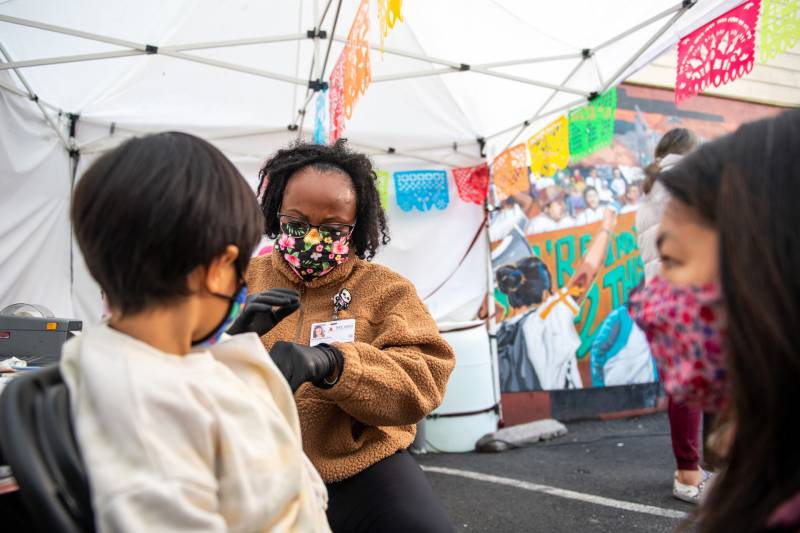For many parents and caregivers of children under 5 years old, the pandemic still feels far from over, with vaccines not yet available for young kids. How worried should we be about the omicron variant? When will the vaccine for kids under 5 be ready? And is my kid safe at school? These are just some of the questions swirling through the minds of parents and caregivers as omicron surges in the Bay Area.
KQED's Brian Watt spoke with Dr. Yvonne Maldonado, a pediatric infectious disease expert at Stanford, about how the variant is affecting children and when we might know more about the vaccine trials for kids under 5 that are currently underway.
The following interview been edited for length and clarity.
KQED's Brian Watt: We know the omicron variant is spreading fast, but it's shown to be less severe in most cases. How is this variant affecting children overall?
Dr. Yvonne Maldonado: It seems to be affecting children very similarly to the way it is affecting adults — it's very transmissible. The incubation period seems to be short. And fortunately, so far, it does not seem to cause more serious illness.
That doesn't mean that children aren't being hospitalized. It just means that the rate of hospitalization does not appear to be higher compared to the delta variant.
How is California doing with regard to kids going to the hospital for COVID, compared to other states?
If you look at the number of infections in kids reported by age, as a fraction of the total population, we are kind of in the middle. We're not seeing the big surge that the Northeast is seeing right now, but we're certainly seeing our fair share of cases in kids.
Do you think we could see the kind of surge that you're talking about in the Northeast?
It's hard to know. I would say that anything is possible at this point.

